Abstract
A framework is developed to take explicitly into account the conflicting demands of ethics and scientific rigor in the design of clinical trials. The framework recognizes the part played by the clinical-scientific community in the weighing of a new result provided by a clinical trial. To illustrate the usefulness of the framework, a value system is adopted which gives relatively high weight to ethical considerations. The analysis based on this value system reveals some limitations of the present clinical-trials mechanism, especially if success is defined exclusively in terms of cure, and other dimensions of the health system, such as explanatory, care, cost or prevention variables are neglected. On the basis of this analysis, it is suggested that: (a) If randomized clinical trials are to be ethically acceptable, they will necessarily yield a large proportion of null results. (b) Positive results from ethically acceptable clinical trials would be expected to have less impact than null results; unless this is the case, there will be a tendency to encourage false hopes. (c) Trials need not yield entirely null results, provided that attention is not focused exclusively on a single outcome variable. A trial of chemotherapy for acute myeloid leukaemia in adults is used to illustrate the need for new approaches to the planning and design of clinical trials.
Full text
PDF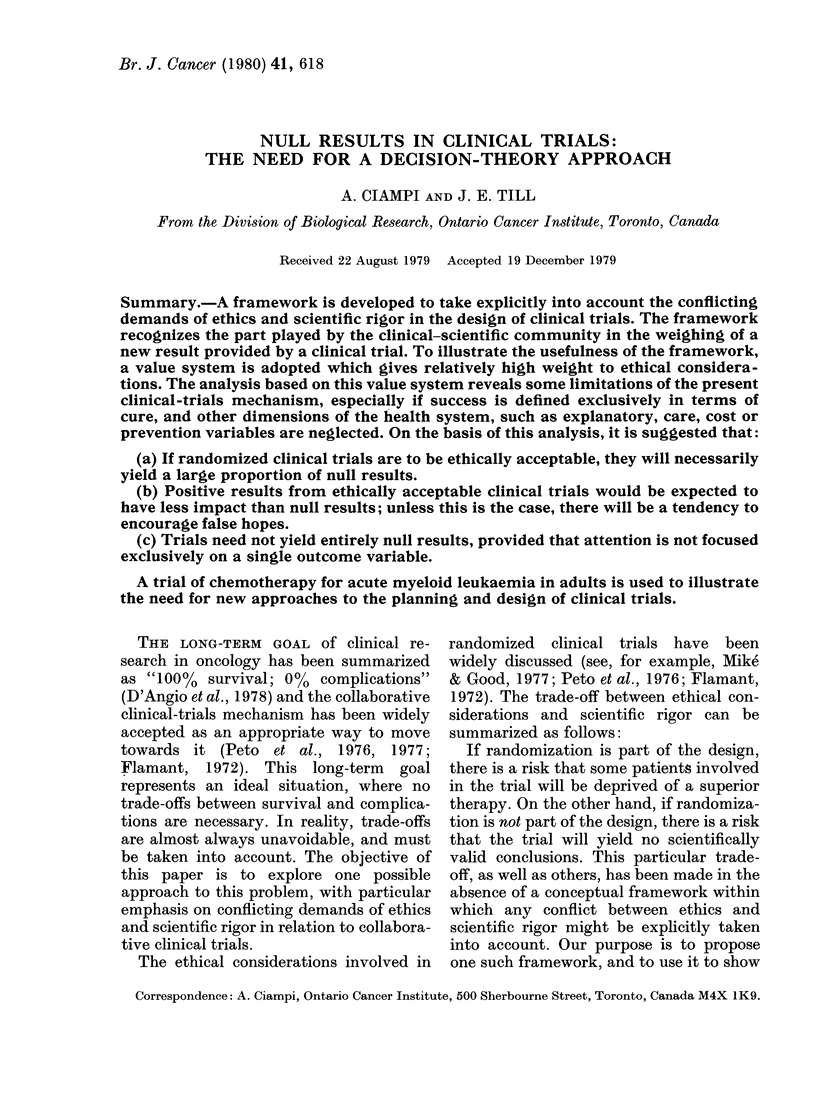
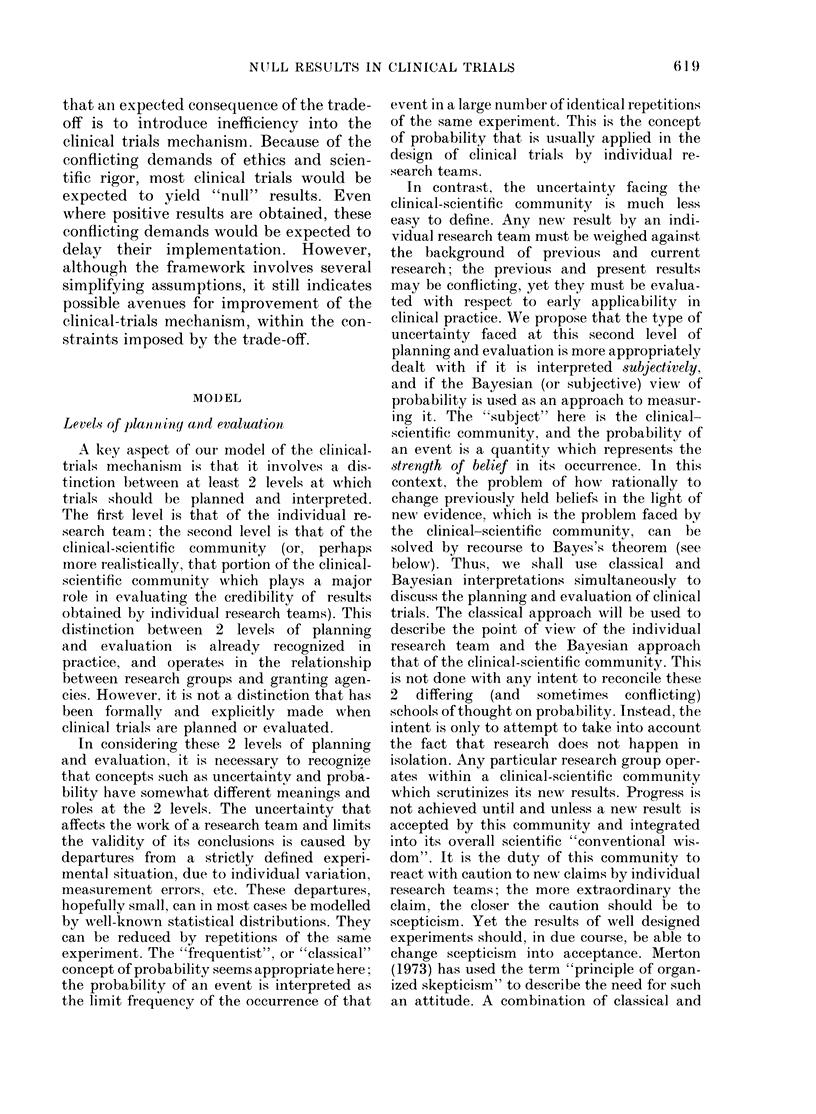
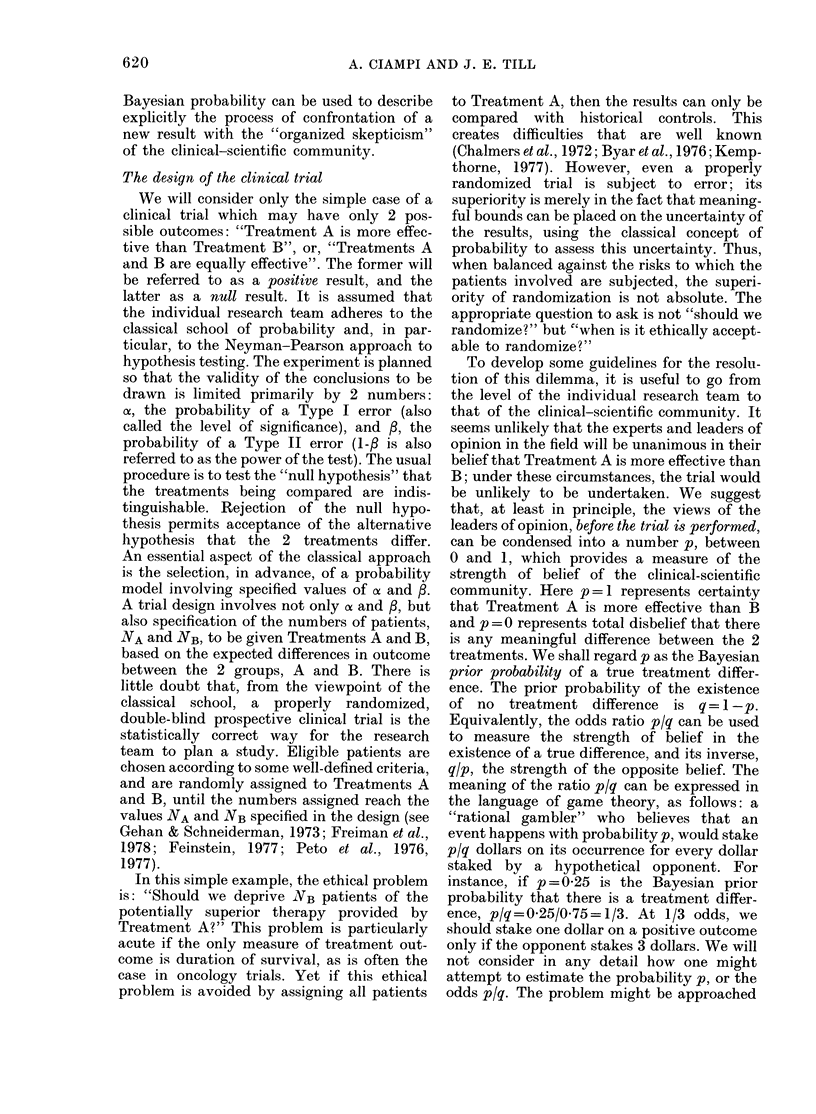
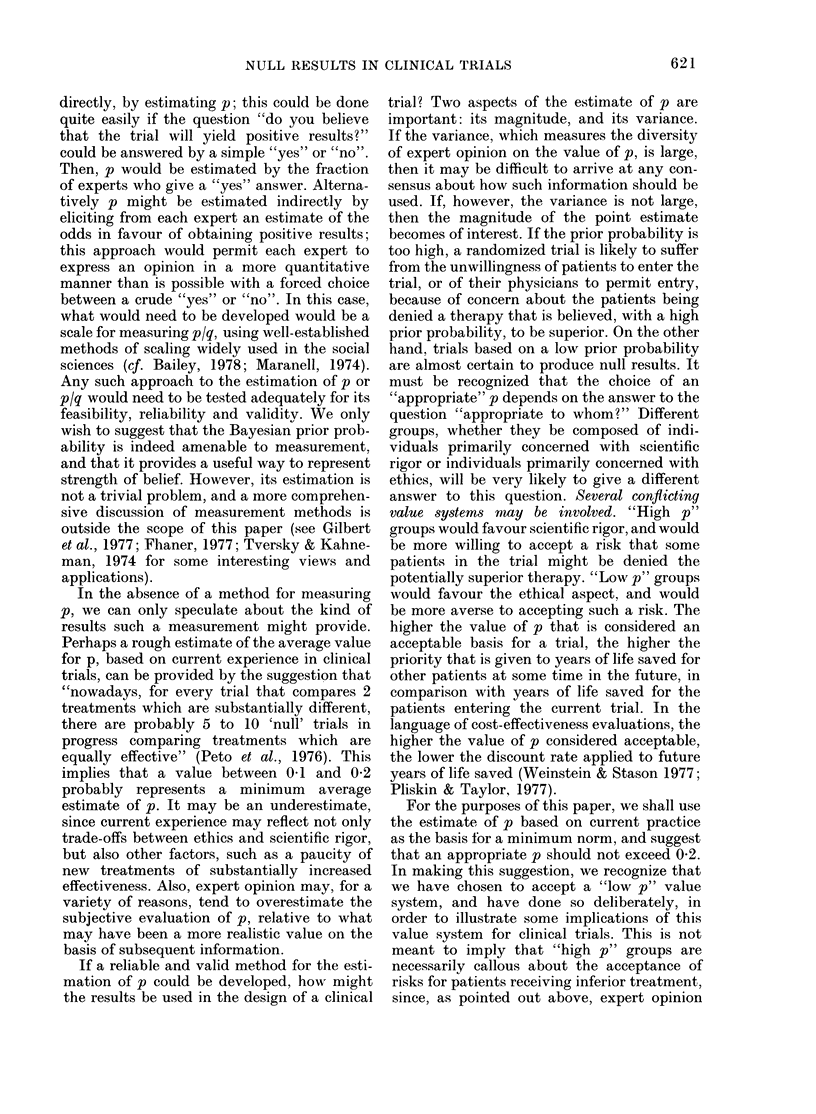
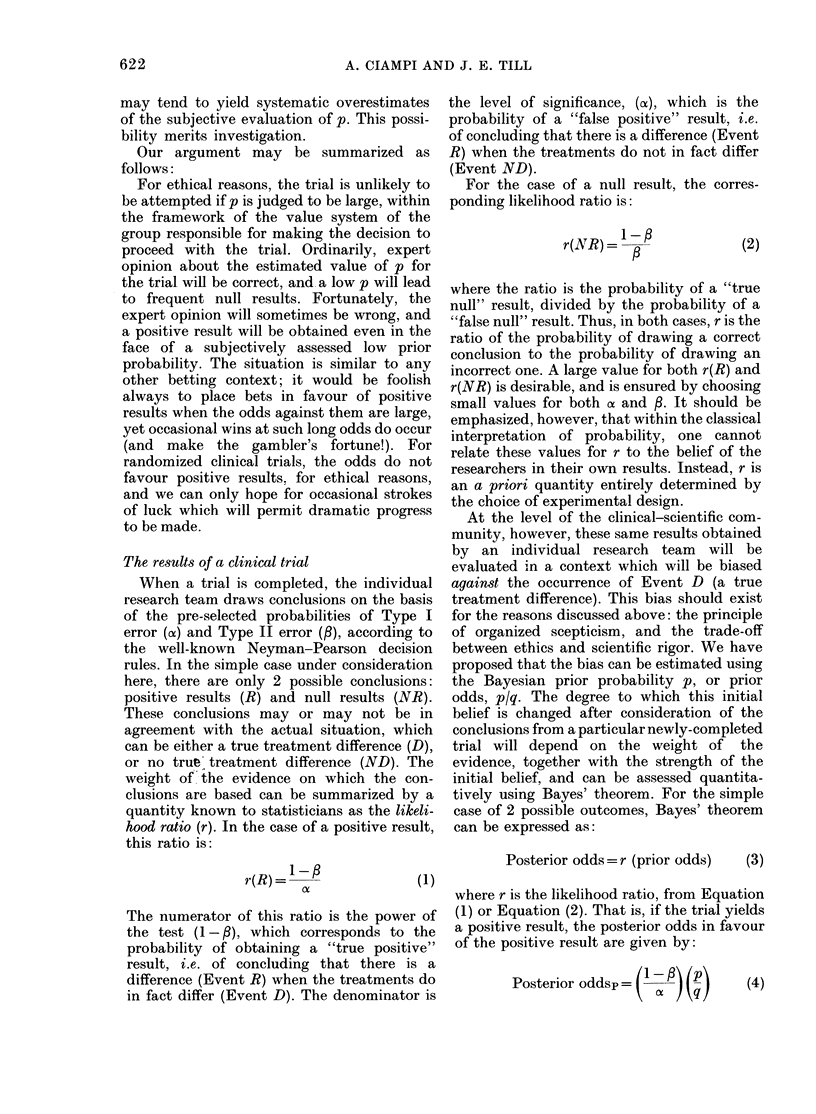
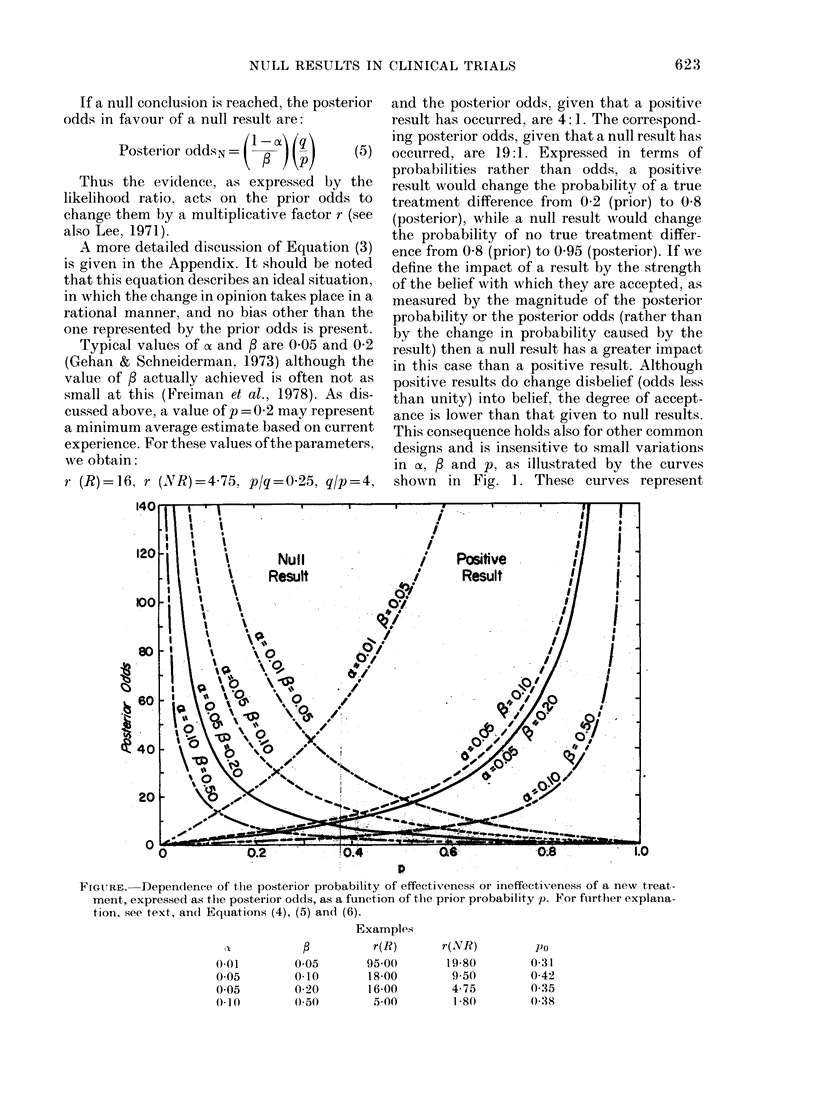
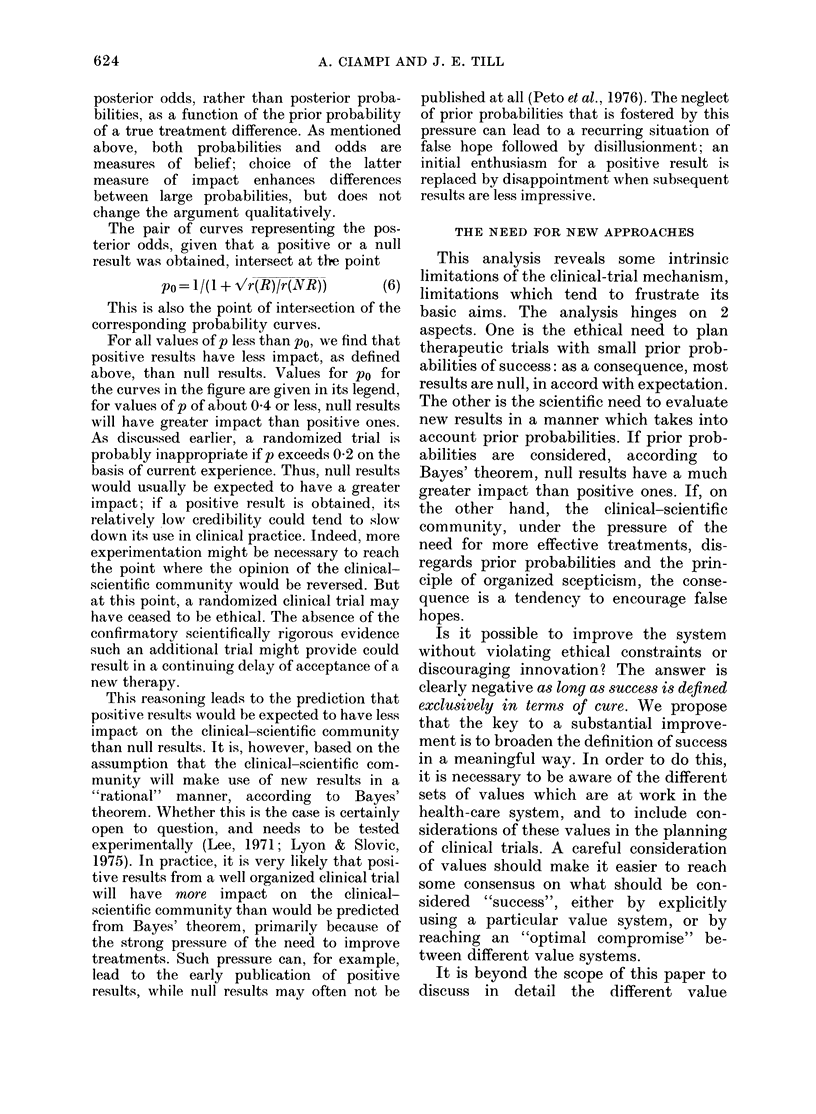
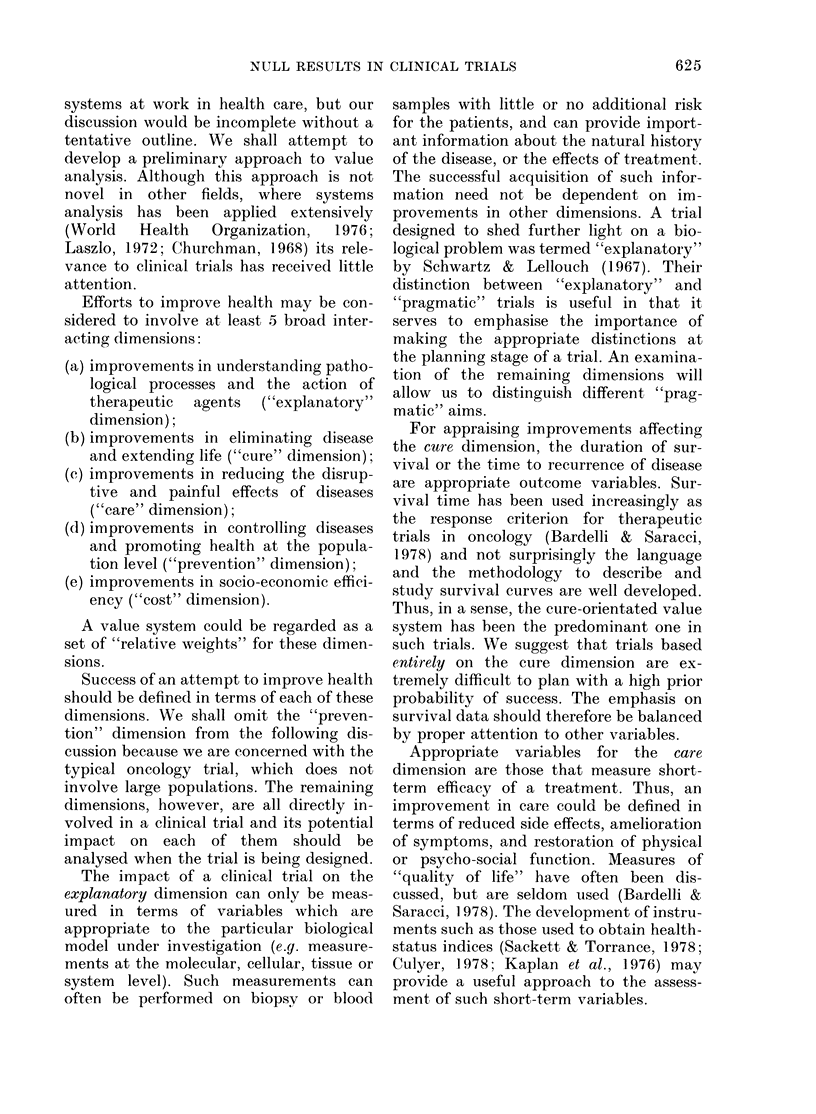
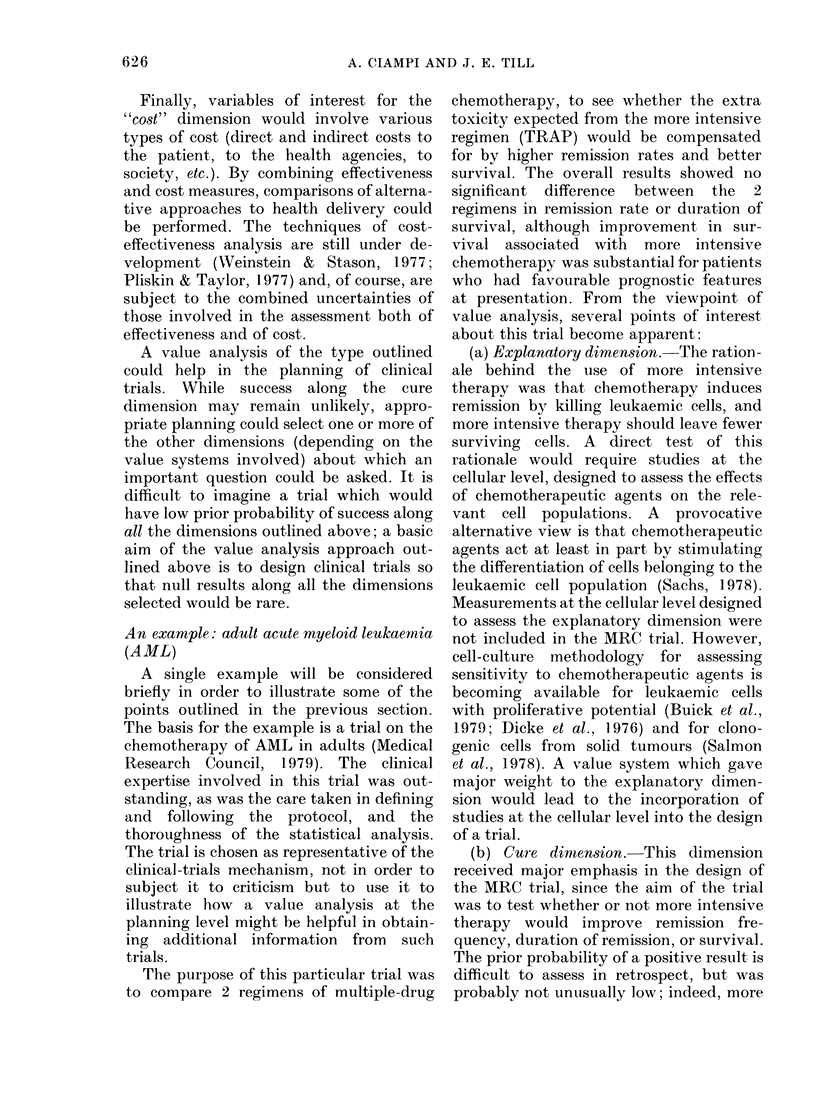
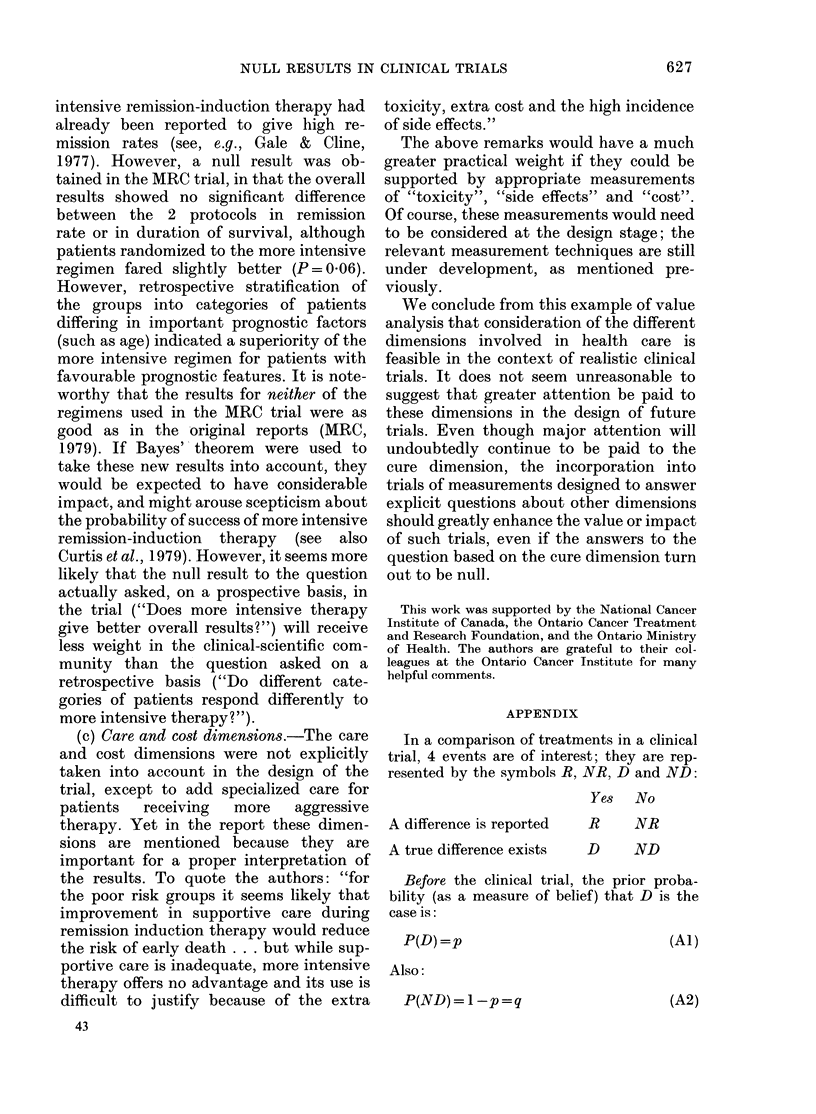
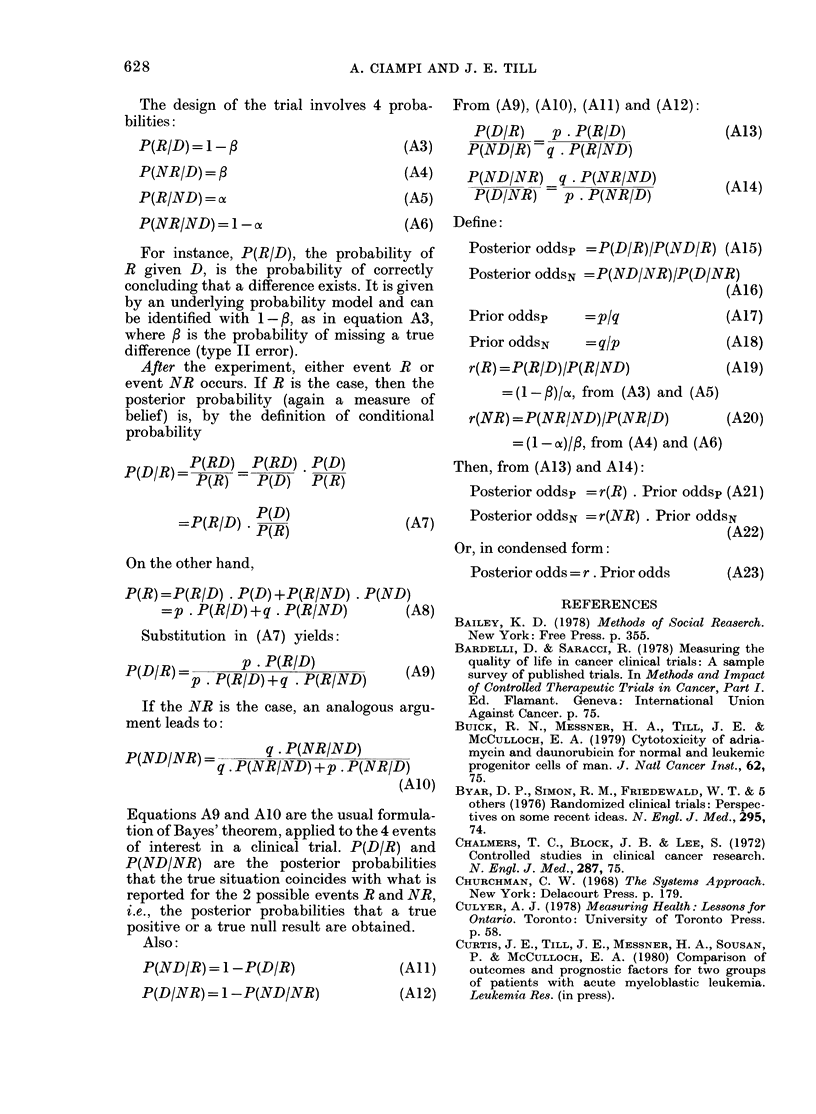
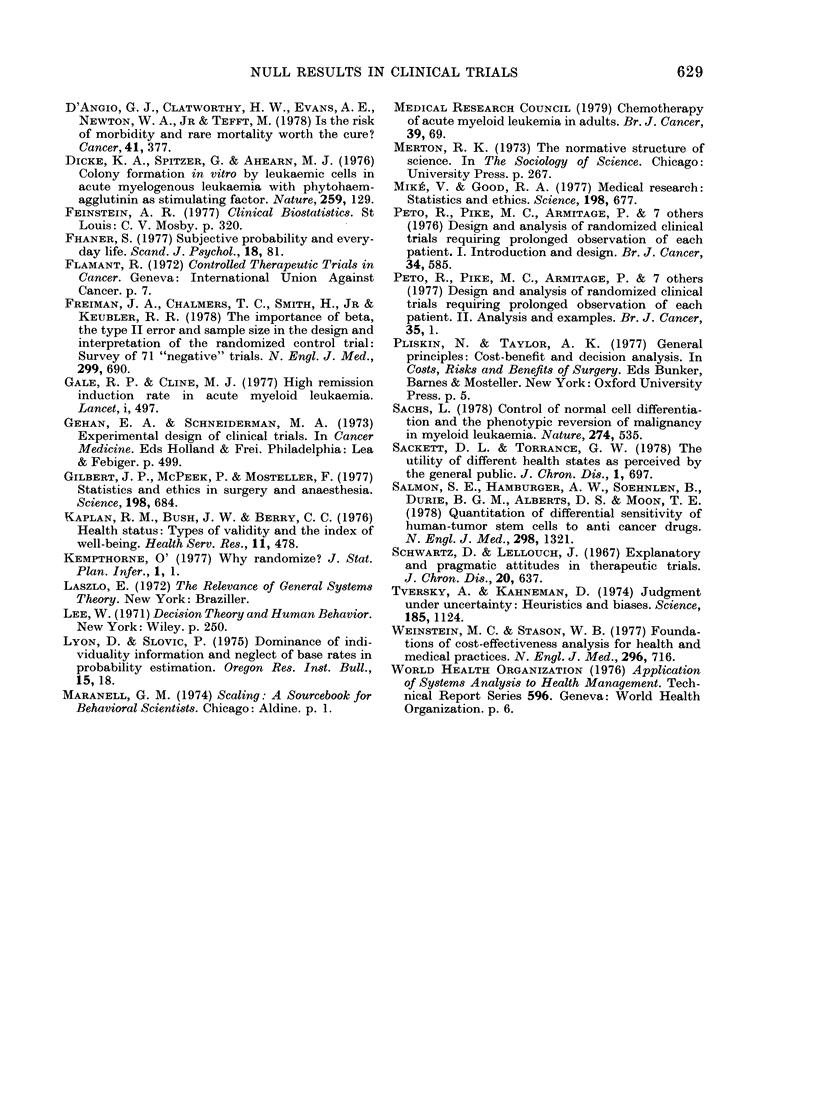
Selected References
These references are in PubMed. This may not be the complete list of references from this article.
- Chalmers T. C., Block J. B., Lee S. Controlled studies in clinical cancer research. N Engl J Med. 1972 Jul 13;287(2):75–78. doi: 10.1056/NEJM197207132870205. [DOI] [PubMed] [Google Scholar]
- D'Angio G. J., Clatworthy H. W., Evans A. E., Newton W. A., Jr, Tefft M. Is the risk of morbidity and rare mortality worth the cure? Cancer. 1978 Jan;41(1):377–380. doi: 10.1002/1097-0142(197801)41:1<377::aid-cncr2820410151>3.0.co;2-#. [DOI] [PubMed] [Google Scholar]
- Dicke K. A., Spitzer G., Ahearn M. J. Colony formation in vitro by leukaemic cells in acute myelogenous leukaemia with phytohaemagglutinin as stimulating factor. Nature. 1976 Jan 15;259(5539):129–130. doi: 10.1038/259129a0. [DOI] [PubMed] [Google Scholar]
- Freiman J. A., Chalmers T. C., Smith H., Jr, Kuebler R. R. The importance of beta, the type II error and sample size in the design and interpretation of the randomized control trial. Survey of 71 "negative" trials. N Engl J Med. 1978 Sep 28;299(13):690–694. doi: 10.1056/NEJM197809282991304. [DOI] [PubMed] [Google Scholar]
- Gale R. P., Cline M. J. High remission-induction rate in acute myeloid leukaemia. Lancet. 1977 Mar 5;1(8010):497–499. doi: 10.1016/s0140-6736(77)91366-6. [DOI] [PubMed] [Google Scholar]
- Gilbert J. P., McPeek B., Mosteller F. Statistics and ethics in surgery and anesthesia. Science. 1977 Nov 18;198(4318):684–689. doi: 10.1126/science.333585. [DOI] [PubMed] [Google Scholar]
- Kaplan R. M., Bush J. W., Berry C. C. Health status: types of validity and the index of well-being. Health Serv Res. 1976 Winter;11(4):478–507. [PMC free article] [PubMed] [Google Scholar]
- Miké V., Good R. A. Old problems, new challenges. Science. 1977 Nov 18;198(4318):677–678. doi: 10.1126/science.333583. [DOI] [PubMed] [Google Scholar]
- Peto R., Pike M. C., Armitage P., Breslow N. E., Cox D. R., Howard S. V., Mantel N., McPherson K., Peto J., Smith P. G. Design and analysis of randomized clinical trials requiring prolonged observation of each patient. I. Introduction and design. Br J Cancer. 1976 Dec;34(6):585–612. doi: 10.1038/bjc.1976.220. [DOI] [PMC free article] [PubMed] [Google Scholar]
- Sachs L. Control of normal cell differentiation and the phenotypic reversion of malignancy in myeloid leukaemia. Nature. 1978 Aug 10;274(5671):535–539. doi: 10.1038/274535a0. [DOI] [PubMed] [Google Scholar]
- Sackett D. L., Torrance G. W. The utility of different health states as perceived by the general public. J Chronic Dis. 1978;31(11):697–704. doi: 10.1016/0021-9681(78)90072-3. [DOI] [PubMed] [Google Scholar]
- Salmon S. E., Hamburger A. W., Soehnlen B., Durie B. G., Alberts D. S., Moon T. E. Quantitation of differential sensitivity of human-tumor stem cells to anticancer drugs. N Engl J Med. 1978 Jun 15;298(24):1321–1327. doi: 10.1056/NEJM197806152982401. [DOI] [PubMed] [Google Scholar]
- Schwartz D., Lellouch J. Explanatory and pragmatic attitudes in therapeutical trials. J Chronic Dis. 1967 Aug;20(8):637–648. doi: 10.1016/0021-9681(67)90041-0. [DOI] [PubMed] [Google Scholar]
- Tversky A., Kahneman D. Judgment under Uncertainty: Heuristics and Biases. Science. 1974 Sep 27;185(4157):1124–1131. doi: 10.1126/science.185.4157.1124. [DOI] [PubMed] [Google Scholar]
- Weinstein M. C., Stason W. B. Foundations of cost-effectiveness analysis for health and medical practices. N Engl J Med. 1977 Mar 31;296(13):716–721. doi: 10.1056/NEJM197703312961304. [DOI] [PubMed] [Google Scholar]


